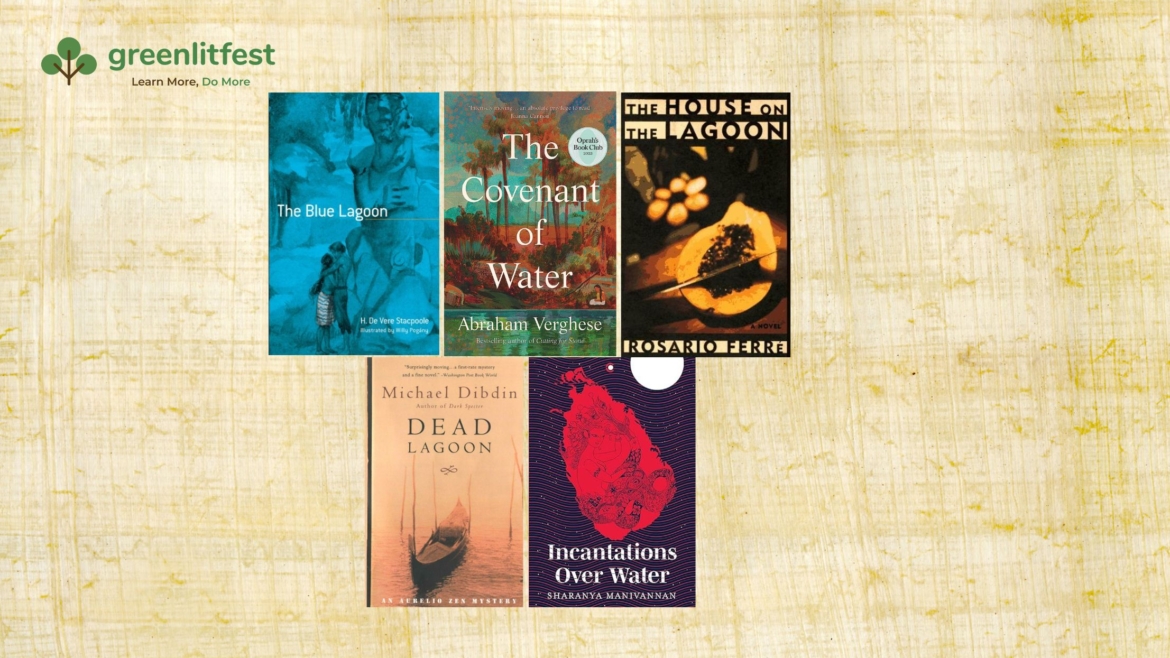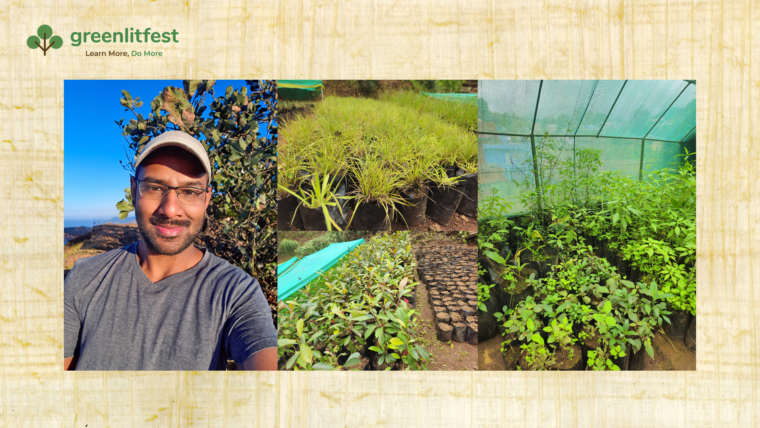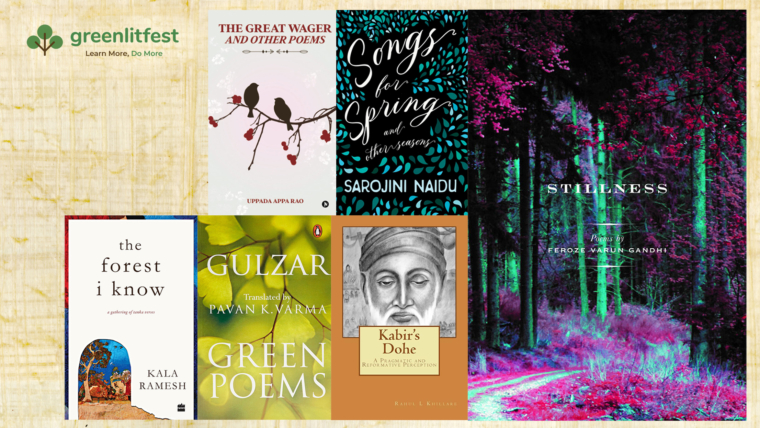Professor and author William Alexander McClung once stated that in contemporary cultures, ‘paradise is a strange land but a familiar presence; few have been there, but many people have an idea of what it is like.’ His idea of paradise is well-suited to lagoons – distinct water bodies, neither as common as lakes nor spread as wide as the coast, that are sparsely scattered across the world and appear even less frequently in literature. However, the literal and figurative scripting of the waterscape has taken many interesting forms.
Fictional Tales
Sprawling literary fiction, The Covenant of Water by Abraham Verghese opens with the matriarch Big Ammachi as a young girl saying goodbye to the lagoon and creek in her childhood home, on the day of her marriage. But when looks out of her new home after marriage, she finds another ‘fantasy world of rivulets and canals, a lattice work of lakes and lagoons, a maze of backwaters and bottle green lotus ponds, a vast circulatory system.’ Delving into the cultural practices of people inhabiting the backwater regions and estuaries in Kerala, this book takes readers through three generations of an orthodox Malayali Christian family and subtly portrays water as a silent dictator – the creator of destinies.
In her epic novel The House on the Lagoon, another multigenerational tale, Rosario Ferre uses lagoons to present the uncertain, split identity of Puerto Ricans as their country is incorporated into the United States and they are granted American citizenship. Indeed, lagoons have often served as poignant metaphors for the amorphous vicissitudes of life.
Adapted several times into cinema, Henry De Vere Stacpoole’s The Blue Lagoon is a delicately conceived romance between cousins marooned on an island in the Pacific Ocean after a shipwreck. Bearing vivid descriptions of the vegetation and scenery of the island, the novel juxtaposes love, the innocence of childhood and a carefree life with the tranquillity and solitude of the landscape.
Mysteries unfold in the backwaters of Venice, in Michael Didbin’s Dead Lagoon, the fourth in his Aurelio Zen series. Meanwhile, in Thomas Mann’s Death in Venice, a writer seeking spiritual awakening is dragged down the canals of erotic destruction. Both books explore transformations within the constrictive space of lagoons.
Set in Mattakalappu (Batticaloa, Sri Lanka), Sharanya Manivannan’s Incantations Over Water is a stunning graphic novel where a half-mermaid, half-woman protagonist narrates and sings stories of her world looping them across space and time. Inspired by folklore about the sounds that emanate from lagoons, the book carefully knits a tale that touches upon the cultural, social and troubled political history of Sri Lanka.
In Nnedi Okorafor’s science fiction novel Lagoon, the waterbody symbolises a fine ridge between the chaos of the present and the utopia of the future, as the author puts forth her vision of African futurism, where sexualities and identities do not have to follow the uncompromising rigidness of the past.
Short Fiction and Poetry
Kerala’s backwaters and lagoons serve as a backdrop in many short stories by Thakazhi S. Pillai, a stalwart of Malayalam literature. ‘In the Flood’, part of an anthology of the author’s work translated by K M George, delves into the staggering depths of caste history and reveals the ways in which floods swallow tales of oppression.
One of Joseph Conrad’s most popular short stories, ‘The Lagoon’ is set in a Malay Archipelago and explores the dark depths of deceit, guilt and love. The story has been anthologised in several collections, including one by Ruskin Bond.
The titular story in Janet Frame’s collection, The Lagoon and Other Stories, explores the narrator’s ambiguities about stories and storytelling following revelations of her family history upon a visit to Picton, a coastal town in New Zealand. In her paper, The Poetics of Dissolution, Cindy Gabrielle highlights the waterscape in this story as symbolising ‘murky depths and muddy surfaces – all that can be lost and subsequently retrieved, albeit only through memory.’
Lagos, the most populous city in Africa, derives its name from a Portuguese word for ‘lakes’ and is home to several lagoons. The anthology Lagos of the Poets edited by Odia Ofeimun, is an evocative ode to the city. In his poem ‘Lagoon’ Ofeimun writes,
The lagoon speaks
like a foetus remembering the future,
listening from the depths of formless songs…
Non-Fiction
Ecological facets of lagoons are captured in a plethora of non-fiction. In the Lagoons of Gangetic Delta, edited by Gautam K Bera and Vijay S Sahay, is an anthropological history of Sundarbans and offers an insight into various civilizations that have inhabited this region.
The ecology and environmental pressures of Odisha’s Chilika lagoon are extensively documented in Ecology, Conservation and Restoration of Chilika Lagoon, edited by Gurdeep Rastogi, Deepak R Mishra and Ajit K. Pattnaik.
Ecohydrology of Kerala: River Catchments and Coastal Backwaters edited by Salom Thanga Vincent, Tim Jennerjahn, Soman Kunjupillai and Srikumar Chattopadhyay carries information on the biodiversity of Kerala’s riverine and backwater systems, and offers sustainable solutions for some of the utilization problems clouding them. An environmental management proposal is also drawn up in Morphological and Biogeochemical Facsimile of Pulicat Lagoon by Edwin Jeba Kumar and Usha Natesan.
Life on the Lagoons by Horatio Brown is about the topography and history of Venice and the web of life that is interlinked to this region.
R E Johannes’s Words of the Lagoon: Fishing and Marine Lore in the Palau District of Micronesia is a marine biologist’s account of the native knowledge of Palauan fishermen that was handed to them by their ancestors.
A more overarching, less location-centric perspective can be found in Andrew Manning’s Lagoon Environments Around the World, a scientific examination of lagoons and the anthropogenic effects on them.
Parting Note
Lagoons throughout the world are threatened by the capitalistic ambitions of states and international territorial disputes, yet literature on them is missing an intimate portrayal akin to Nan Shepherd’s work on mountains or Roger Deakin’s portrayal of the British Isles. Humans witnessing the rapidly disintegrating ecosystem need literature that celebrates the regenerative properties of these water bodies and seeps into the consciousness of readers to rekindle humankind’s intimate bond with nature.
Monisha Raman’s essays and short stories have been published by various magazines in India and internationally. Her work was a part of the anthology Narratives in Domestic Violence published by the International Human Rights Arts Festival.



